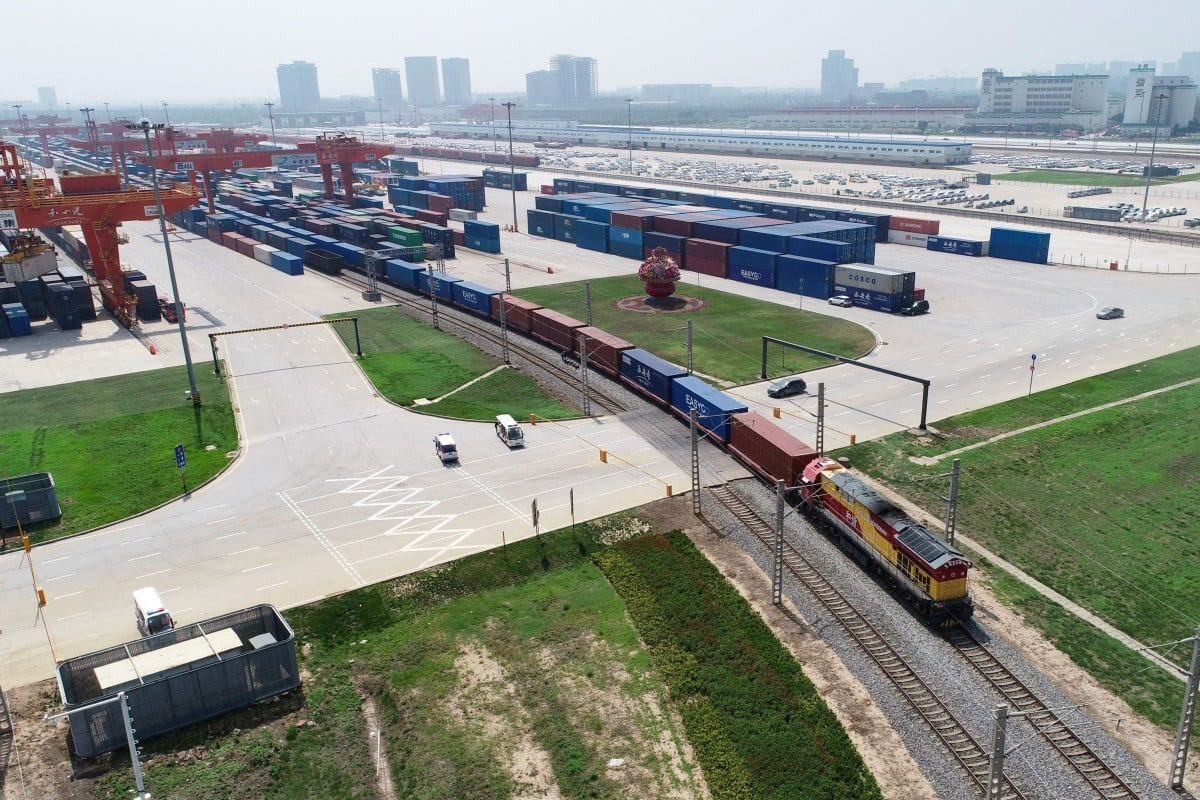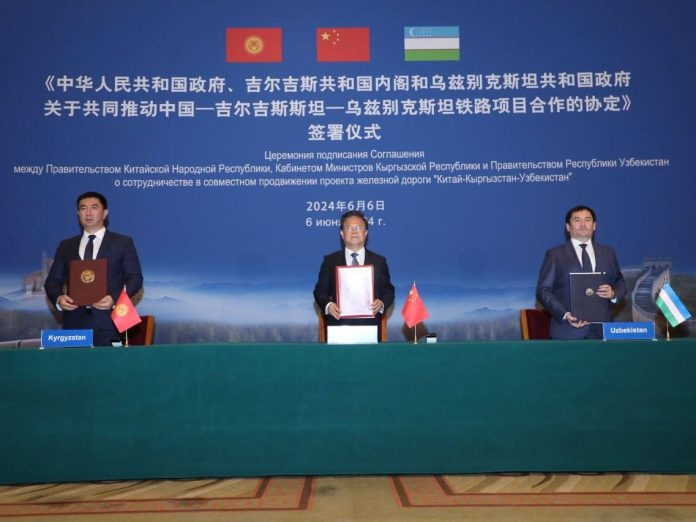On June 6th, China, Uzbekistan, and Kyrgyzstan signed an agreement to construct a 450-kilometer (280-mile) railway between the countries. According to local media, the project is expected to double the volume of mutual trade between the nations. For a long time, China has been invested in the raw materials in Central Asian countries—for example, the recent $1.5 billion copper smelter China agreed to build in Kazakhstan on June 3rd—but in the past decade, under its Belt and Road Initiative (BRI) , Beijing has increasingly focused on long-term investment projects. Reportedly, trade between China and Central Asian nations reached $89 billion in 2023.
An Alternative Trade Route
The agreement between the three leaders was signed virtually by Uzbek President Shavkat Mirziyoyev, Kyrgyz President Sadyr Japarov, and Chinese leader Xi Jinping. The railway project has been discussed for decades and will be the shortest land option to move goods from China to Uzbekistan and vice versa. Additionally, YTO Cargo Airlines and Loong Air, two Chinese airlines, recently unveiled new routes to Uzbekistan airports, another example of China’s transit investment in the region.
The railway will start in Kashgar, a Chinese city formerly an important oasis on the Silk Road, and end in Andijan, an Uzbek city in the far east of the country. Not only will the railway increase trade and partnership between the three nations, but it will also give China a way to trade with Central Asian countries without using Russia and its Trans-Siberian railway. Currently, goods from China can only travel to Europe or the Persian Gulf through Russia or Pakistan, or else go further south by sea.
The “Middle Corridor,” otherwise known as the Trans-Caspian International Transport Route, replicates the ancient Silk Road and stretches from China to Europe via Central Asia. If more transit infrastructure is developed from Uzbekistan to Turkmenistan, which has been outlined in the past, then Iran could stand to benefit from the improved connectivity to China.
China, one of Iran’s few great power partners, could improve its trade not only with Europe but also with the Middle East. These alternative trade routes could also be viewed as Beijing hedging against a US naval blockade of the nation, which could occur in the event that China invades Taiwan.

How Much of Central Asian Investment is Chinese?
For China, Central Asia is ripe with economic opportunity, and although China has passed Russia as the top investor in the region, it’s still difficult to know exactly how far ahead they are. For example, China says in 2023 they bilaterally traded $41 billion with Kazakhstan—who has long been their biggest Central Asian trading partner—but Kazakh media reported only $31.5 billion. In addition, Beijing allegedly had significant trade data discrepancies last year with Kazakhstan, Tajikistan, and Kyrgyzstan. China reported a total trade turnover of $89.2 billion, including Uzbekistan and Turkmenistan, but the aggregate trade turnover reported by these countries respectively amounts to only $63.3 billion.
In comparison, Russia, the second leading investor in Central Asia, reported its trade turnover with Central Asia at $50.8 billion.
The Future of FDI in Central Asia
Only a few years ago, in 2019, the majority of Foreign Direct Investment (FDI) in Central Asia had been from EU nations, with Russia and China in second and third place, respectively. Although the majority of EU investments were in crude oil, they had also been investing in Central Asia as part of its Global Gateway plan to develop infrastructure globally. Current data shows how much the region has become dominated by China instead.
Western countries, in addition to smaller Asian countries, ought to significantly increase their investments in Central Asian countries and infrastructure to provide an alternative to China. Central Asian countries like Kazakhstan have shown a willingness to interact diplomatically with Western nations and remain opposed to becoming a place of conflict. The United States in particular historically provided large investments to the region after the collapse of the Soviet Union and could leverage that to establish new and stronger trade relations with the country.
What the construction of the railway will actually look like, in terms of cost and timeline, is up in the air. China, rife with current economic problems, has not provided a cost for the project. Like many of the BRI projects, the railway is likely to provide jobs for Chinese workers, but bring in few opportunities for the Kyrgyz and Uzbek workforce. The railway project would also be a new target for terrorist attacks, which have been plaguing the China-Pakistan Economic Corridor. Uzbekistan also has local Uyghur Muslim populations, which could exasperate tensions. It remains to be seen if this recent railway project will turn out to be too big of an endeavor for China, at least for the short term.

